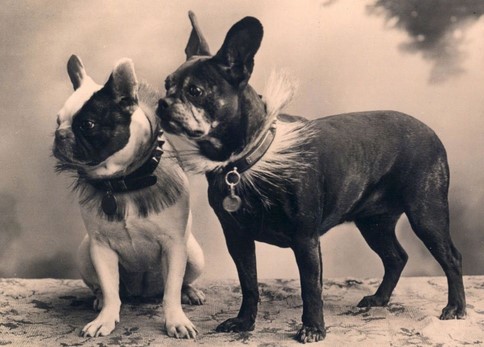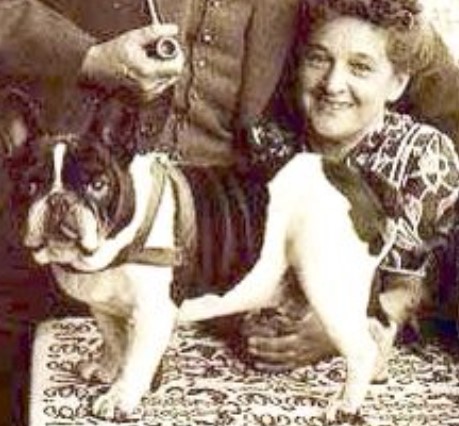❤FRENCH BULLDOG HISTORY❤
History of The French Bulldog is a breed of domestic dog. They are the result of a cross between Toy Bulldogs imported from England and local ratters in Paris, France, in the 1800s.
French Bulldogs are among the most popular breeds in the world. Currently the American Kennel Club ranks them at number 4 in their long list of most desirable. These dogs make their point communicating with expressive eyes, energetic attitude and possibly the Frenchie Talk.
French Bulldogs are excellent watch dogs who adapt well to family life or single. They don’t mind being inside most of the time. They get along well with cats and other pets and they like to make friends with your guests and family who drop by. No wonder this a favorite dog for city life from Canada to the US and Europe.
French bulldog breed comes in different coat color variations. You can find them in acceptable AKC color standards such as fawn, brindle, cream, and white, as well as in rare lilac, Isabella, blue, chocolate, and sable coats.


❤BULLDOG HISTORY❤
In the Bulldog History, the term “Bulldog” was first mentioned in literature around 1500. The first reference to the word with the modern spelling is dated 1631 or 1632 in a letter by a man named Preswick Eaton. In 1666, English scientist Christopher Merret mentioned the bulldogh in his work Pinax Rerum Naturalium Britannicarum.
The designation “bull” was applied because of the dog’s use in the sport of bull baiting. It was common for a bull to maim or kill several dogs at such an event, either by goring, tossing, or trampling. Over the centuries, dogs used for bull-baiting developed the stocky bodies and massive heads and jaws that typify the breed as well as a ferocious and savage temperament. Bull-baiting, along with bear-baiting, reached the peak of its popularity in England in the early 1800s until they were both made illegal in 1835. Because of this, the Old English Bulldog had outlived its usefulness in England as a sporting animal and its working days were numbered.
In mid-17th century New York, Bulldogs were used as a part of a citywide roundup effort led by Governor Richard Nicolls. Because cornering and leading wild bulls were dangerous, Bulldogs were trained to seize a bull by its nose long enough for a rope to be secured around its neck. Bulldogs as pets were continually promoted by dog dealer Bill George.
Bulldogs’ lives are relatively short. At five to six years of age they start to show signs of aging. In time, the original old English Bulldog was crossed with the pug. The outcome was a shorter, wider dog with a brachycephalic skull.
Though today’s Bulldog looks tough, he cannot perform the job he was originally created for as he cannot withstand the rigors of running and being thrown by a bull, and also cannot grip with such a short muzzle.
The oldest single breed specialty club is The Bulldog Club (England), which was formed in 1878. Members of this club met frequently at the Blue Post pub on Oxford Street in London. There they wrote the first standard of perfection for the breed.
In 1894 the two top Bulldogs, King Orry and Dockleaf, competed in a contest to see which dog could walk 20 miles. King Orry was reminiscent of the original Bulldogs, lighter boned and very athletic. Dockleaf was smaller and heavier set, more like modern Bulldogs. King Orry was declared the winner that year, finishing the 20-mile walk while Dockleaf collapsed.
The Bulldog was officially recognized by the American Kennel Club in 1886. At the turn of the 20th century, CH. Rodney Stone became the first Bulldog to command a price of $5,000 when he was bought by controversial Irish American political figure Richard Croker.



